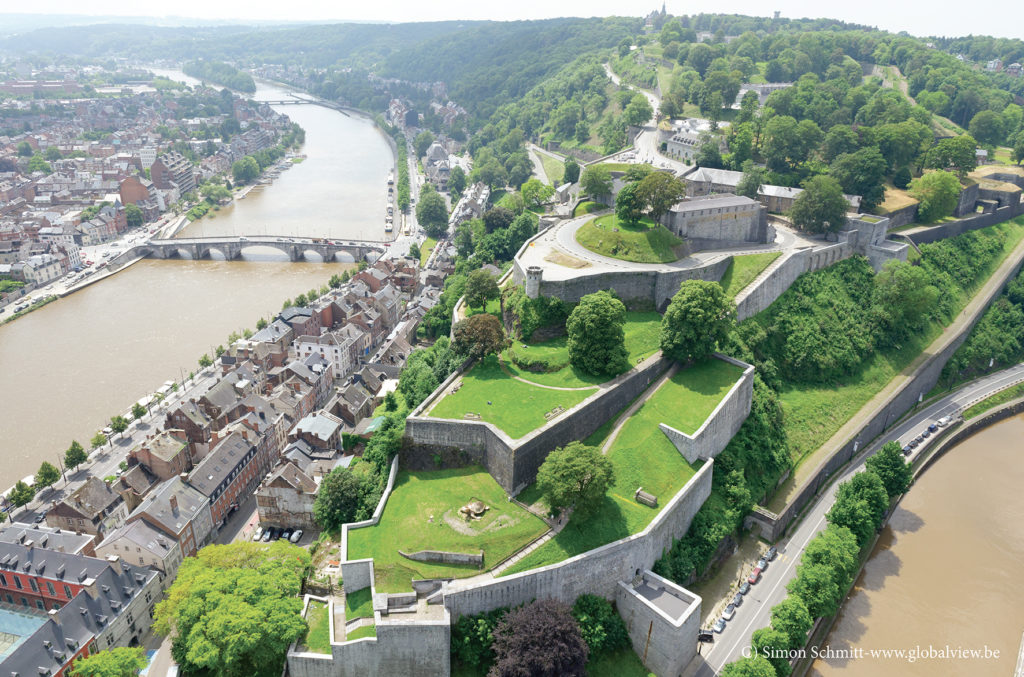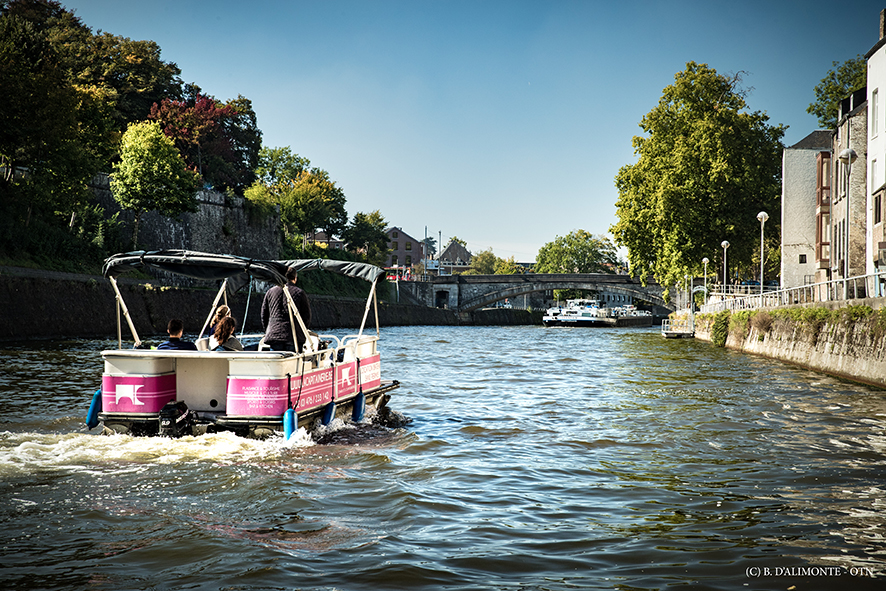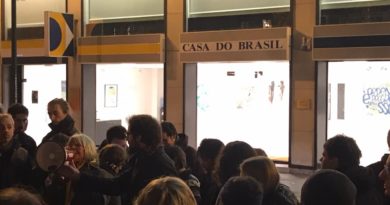Namur in a day: discover the beauty of Wallonia’s capital
It may be one of the oldest cities in Belgium but Namur can now be seen in a new light – literally.
On selected dates throughout the year, including public holidays, the walls of the city’s famous Citadel will be illuminated from 8pm until late. The stunning light show will cast this old fortress in a whole new light and is sure to become a « must-see » sight for people from far and wide.

But, of course, the Walloon capital also has a lot more going for it and one great way to discover its undoubted charms is by taking a slightly unconventional guided tour on a rickshaw.
Usually employed as taxis to get round traffic-choked streets in major cities like London, these are put to a rather different and more leisurely (and very informative) use in Namur.
Until 1860 Namur was surrounded by walls for protection. They were virtually all destroyed soon afterwards but remnants do remain and these can be seen along the tour.
The starting point, though, is something rather more modern – the city’s main thoroughfare and first commercial street in Wallonia. Nearby is rue de Fer (Iron Street), so called because the entrance to it used to be an iron door – and City Hall, built in 1870 and formerly owned by a painter. The tour guides are full of great nuggets of info and insights into the city’s heritage such as the story behind the angel that stands aloft a column in one of the main shopping streets. In the past Namur was a military city, filled with soldiers, and it became a « challenge » for them to try to climb the column to « steal » the trumpet from the angel’s mouth. Many succeeded but, as Namur became more of a city of scholars, the custom passed to students.
It isn’t the only tradition that has spanned the generations, so too is the custom of ensuring that all the shop fronts in one typical Namur street are made from wood.
There are many other fascinating facts to discover during the very enjoyable tour, including the history of the old vegetable market near the church of St John the Baptist.
Traditionally known as the « Old Place, » it contains a café, dating as back as 1616 and reputed to be the oldest not only in Namur but in the whole of Belgium. This is where, the guides explain, men would sit and sample the local tipples while their womenfolk shopped on the market. Fast forward to the present and it’s still a lovely spot to relax over a beer, brewed locally of course (appropriately a street containing several small brewers is located close by).
As the tour guides carefully navigate their way through the sometimes crowded streets, you come across another « local landmark », artwork on the side of a building showing Namur’s famous symbol: the snail!
As the guide points out, people from Namur are affectionally known for their slow accents, hence the choice of symbol. Actually, it is the relative slow pace of life here that endears it so much to an outsider.
Further along is something from the past that people may not want to be reminded about: the terrible floods on New Year’s Day in 1926 when the two local rivers, the Sambre and Meuse broke their banks and rose to a height of almost two metres. It was the worst flood in the city’s history and the water marks are still clearly visible near the Bishop’s Palace.
Namur may, in some ways, have lost a bit of its influence over the years but it is still the seat of the provincial government for Wallonia.
Another proud claim to fame is the Campanile Tower which dates to 1047 and which is still rung manually every Saturday. It plays a lovely melody – roughly translated as « Beautiful Bucket of Flowers » – that rings out throughout the whole city to enjoy.
If the tower is one of the oldest parts of town then its cathedral, St Aubin, is a relative newcomer, being the most recent cathedral in Belgium. Based on an Italian design, it was modelled, no less, on the great St Peter’s in Rome.
Like much of Belgium, Namur has experienced some dark days in the past, one of which occurred in 1944 when the Americans accidentally missed their intended target, a bridge, with an aerial bombardment. The result was the loss of 300 lives and over 2,000 properties destroyed. Happily, Namur now lives in more peaceful times and the rickshaws, a business set up in July 2016, is a really great way to sample some of its delights.

Another splendid and recommended viewpoint, this time from the water, is from a boat from Charlie’s Capitainerie, which is based on a floating terrace (thought to be the only one of its kind in the country) on the Meuse.
Combining a very pleasant bar – ideal for a quiet drink as you watch the ecletic mix of passing vessels – with a water sports business, this has proved a big hit locally since its launch in April 2014.
It’s possible to hire a boat and meander along the local waterways – another viewpoint of the Citadel – or try something a bit more energetic such as « blockjumping » where one is catapulted into the river! Some of the water-based activities, such as the stand-up paddle trips, will be winding down for the winter but one event well worth looking out for is the « Cross The River » fun run on 11 November.
A floating bridge is thrown across the Meuse allowing people to run from one side to the other, via a circular route, of up to 8.25km. It’s the third year Charlie’s Capitainerie has organised this novel way of crossing the river and it’s well worth checking out. And fear not, it’s perfectly safe!
One, year-round, « must-do » local attraction are the fascinating guided tours of the underground tunnels in the Citadel, which allow you to discover the medieval stratum of the site and discover over 2,000 years of European urban and military history. It’s also possible to see the city from yet another perspective – from a little train that travels along the fortifications of this former stronghold.
Once, on inspecting the Citadel, Napoleon described it as the « termite mound of Europe » because of its extensive underground network.
However, the good news is that you don’t have to venture deep into the bowels of this lovely ancient city to discover its understated charms. It’s got plenty to see and do above ground as well and, with the school half term looming, it makes for a great short break if you’re looking for something to with the kids.



